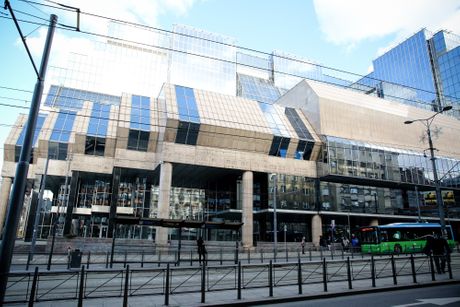National Bank of Serbia again raises key policy rate

At its meeting on Thursday, the NBS Executive Board voted to raise the key policy rate by 25 bp to 6.25%. It also raised the deposit and lending facilities rates to 5% and 7.5%, respectively.
In making the decision, the Executive Board concluded it is necessary to continue to moderately tighten monetary conditions to preempt a surge in inflation expectations and make sure that inflation strikes a downward path and returns within the target tolerance band in the projection horizon. The pass-through of the hitherto key policy rate hikes onto the rates in the markets of money, loans and savings signals the efficiency of the monetary policy transmission mechanism through the interest rate channel, the NBS announced.
At the same time, by maintaining the relative stability of the dinar exchange rate against the euro, the NBS significantly contributes to containing the effects of the spillover of rising import prices onto the prices at home, and to overall macroeconomic stability amid heightened global uncertainty.
Global inflationary pressures are still a reason for concern even though the global energy prices, primarily of electricity and gas, as well as other primary commodities, have declined, with the indicators pertaining to global supply disruptions and container transportation costs having almost completely returned to the pre-pandemic levels.
As stated by the Executive Board, though still relatively high, inflation is gradually declining in a large number of countries. Core inflation is declining more slowly than headline inflation in many countries, due to elevated inflation expectations and labor market factors, notably a further rise in wages.
This means that central banks’ fight against inflation is not over yet as leading central banks – the ECB and the Fed raised their key rates in May again. This should contribute to the expected further weakening of global inflationary pressures. The Executive Board underscores the need to pursue a cautious monetary policy, notably in light of uncertainties as to the duration of the Ukraine conflict and energy availability and prices going forward.

Uncertainties are also associated with the movement of core inflation in a number of countries. An important factor will also be the future monetary policy decisions of leading central banks, given their impact on conditions in the international financial market and capital flows to emerging economies.
Consistent with Executive Board’s expectations, inflation reached a peak in March and decelerated to 15.1% y-o-y in April, mostly reflecting the slowdown in food price growth, which was the main contributor to inflation in the prior period. Core inflation (CPI excluding food, energy, alcohol and cigarettes) also slowed, to 11.1% in April.
Under the current projection, the Executive Board anticipates that y-o-y inflation will continue to move on a downward path, falling more sharply in H2 2023. Its return within the bounds of the target (3±1.5%) is expected in mid-2024.
In Executive Board's judgement, the factors behind such inflation movements are the effects of past monetary tightening, the waning of effects of the global factors which put an upward pressure on energy and food prices in the past period, the slowing of imported inflation, the onset of the new agricultural season, as well as the stabilization and expected fall of inflation expectations.
As for economic activity, the real y-o-y GDP growth in Q1 2023 equalled 0.7%, consistent with the flash estimate of the Statistical Office of the Republic of Serbia. Driven by the expansion in energy and mining sectors, industrial production posted y-o-y growth of 1.9% in the period January–April 2023.
Favorable foreign trade movements extended into April – y-o-y, euro-denominated commodity exports gained 5.6% in April, while commodity imports lost 14.8%. Within commodity exports, manufacturing and electricity recorded a further rise, while the contraction in imports resulted primarily from lower imports of energy and intermediate goods.
The NBS expects economic activity to pick up in the remainder of the year, on the back of a rebound in the euro area external demand, among other things. The recovery of the global economy as of H2 this year and the planned implementation of investment projects, primarily in the areas of road, railway, energy and utility infrastructure, should lead to the acceleration in GDP growth from 2.0–3.0% this year to 3.0–4.0% in 2024, and its return to the pre-pandemic growth path thereafter, of around 4% per year.
The NBS will continue to monitor and analyse trends in international commodity and financial markets and to make future monetary policy decisions depending on the incoming data, taking also into account the expected effects of the past monetary tightening on inflation going forward.
The ensuring of price and financial stability in the medium term will remain monetary policy priority in the coming period, along with supporting further economic growth and development, as well as a rise in employment and preservation of a favorable investment environment.
The next rate-setting meeting will be held on July 13.
(Telegraf Biznis)
Video: Đukanović: Kamatne stope kredita će ići na gore jer nismo smirli inflaciju
Telegraf.rs zadržava sva prava nad sadržajem. Za preuzimanje sadržaja pogledajte uputstva na stranici Uslovi korišćenja.

